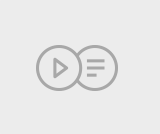
This interactive explores how neurons communicate using action potentials.
- Subject:
- Biology
- Science
- Material Type:
- Interactive
- Provider:
- LabXchange
- Provider Set:
- LabXchange Interactives
- Date Added:
- 12/18/2020

This interactive explores how neurons communicate using action potentials.
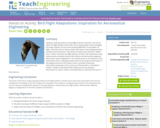
This activity first asks the students to study the patterns of bird flight and understand that four main forces affect the flight abilities of a bird. They will study the shape, feather structure, and resulting differences in the pattern of flight. They will then look at several articles that feature newly designed planes and the birds that they are modeled after. The final component of this activity is to watch the Nature documentary, "Raptor Force" which chronicles the flight patterns of birds, how researchers study these animals, and what interests our military and aeronautical engineers about these natural adaptations. This activity serves as an extension to the biomimetics lesson. Although students will not be using this information in the design process for their desert resort, it provides interesting information pertaining to the current use of biomimetics in the field of aviation. Students may extend their design process by using this information to create a means of transportation to and from the resort if they chose to.
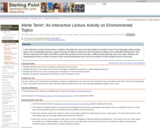
In this Interactive Lecture Demonstration, students will predict the main issues that might be included in short French language videos treating topics such as endangered species, organic farming, the effect of aerosols on the environment, pollution and sustainable development. They will then view short videos on the topics and reflect on how their prior assumptions meshed with reality.
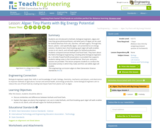
Students are introduced to biofuels, biological engineers, algae and how they grow (photosynthesis), and what parts of algae can be used for biofuel (biomass from oils, starches, cell wall sugars). Through this lesson, plants—and specifically algae—are presented as an energy solution. Students learn that breaking apart algal cell walls enables access to oil, starch, and cell wall sugars for biofuel production. Students compare/contrast biofuels and fossil fuels. They learn about the field of biological engineering, including what biological engineers do. A 20-slide PowerPoint® presentation is provided that supports students taking notes in the Cornell format. Short pre- and post-quizzes are provided. This lesson prepares students to conduct the associated activity in which they make and then eat edible algal cell models.
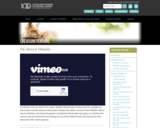
It's Meeko's time to shine! This week's Wildlife Wednesdays feature put the spotlight on one of your favorite animal ambassadors: Meeko, the albino raccoon! Chief Wildlife Officer Harvey Webster and Animal Programs Coordinator Nicole Episcopo gave us a behind-the-scenes look at enrichment and training for our bushy-tailed friend, and shared fun facts about thie Ohio-native species.
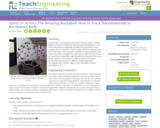
Students learn how nanoparticles can be creatively used for medical diagnostic purposes. They learn about buckminsterfullerenes, more commonly known as buckyballs, and about the potential for these complex carbon molecules to deliver drugs and other treatments into the human body. They brainstorm methods to track buckyballs in the body, then build a buckyball from pipe cleaners with a fluorescent tag to model how nanoparticles might be labeled and detected for use in a living organism. As an extension, students research and select appropriate radioisotopes for different medical applications.
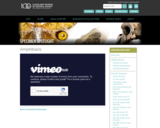
Roberta Muell, Assistant Curator of Vertabrate Zoology at the Cleveland Museum of Natural History, talks about the facinating facts and importance of amphibians.

This interactive will present the mathematical consideration of exponentially
enriching a piece of DNA using PCR. Typically, a PCR protocol will repeat
approximately 30 cycles of denaturation, annealing, and elongation. 30 cycles of
PCR produce around 1 billion copies of the amplified region.
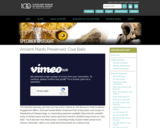
This Scientist Saturday, join host Lee Hall and Dr. Denise Su, the Museum’s Chief Academic Engagement Officer, Gertrude Haskell Britton Endowed Chair of Education, and Curator of Paleobotany & Paleoecology, in a fascinating specimen spotlight. Delve into the scientific study of ancient plants and learn about specimens found in calcified lumps known as “coal balls.” You’ll discover how these lumps—consisting mostly of plant matter preserved in calcium carbonate—allow us to understand fossil plants on a cellular level. Worksheets available for grades 7-8 and 9-12.
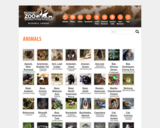
Resource pages of 149 animals from the Cleveland Metroparks Zoo. Each page contains animal details, habitats and known living areas, conservation status and threats, diet, photographs and videos, external resources, and downloadable fact sheets.
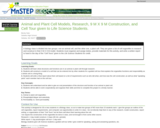
Students build a 9 M X 9 M model of an animal or plant cell with cell organelles inside it and give cell tours to Life Science students. May be done as two large groups, or a whole class project.

This animation introduces what antibodies are, where they come from, and how they can be used in the laboratory.

Students will read and observer ants to discover how ants are the same and different than people.

Este video describe algunas de las formas en que se puede aplicar la electroforesis en gel en el mundo real, desde la medicina forense hasta la clonación de genes.

To create HIV-resistant immune cells with the gene editing tool CRISPR-Cas9, a specific macrophage gene must be disrupted.

This interactive will present the varying applications of the laboratory technique Polymerase Chain Reaction, also known as PCR.

Questo video descrive alcuni dei modi in cui l'elettroforesi su gel può essere applicata nel mondo reale, dalla medicina legale alla clonazione genica.

See the many birds that spend their summer in the Arctic in this video segment from Nature.

This example Socratic questioning page provides an outline for leading a classroom discussion regarding whether or not nanobacteria exist. Sample questions, resources for background information, and tips and assessment information are provided.

This scrollable interactive shows how an abstract of a research article is a
shortened version of the study.